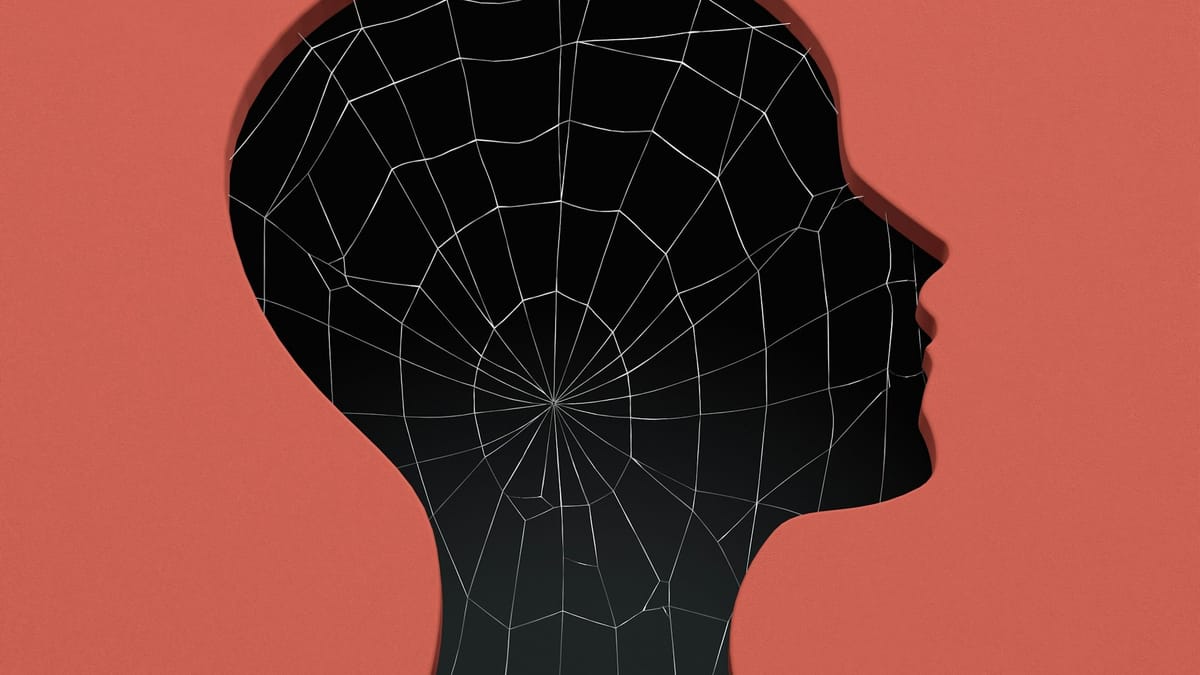When the Brain Falls Silent: A Journey Into the Hidden Realms of the Mind
Is your mind just your brain, or something more? From near-death experiences to moments of unexpected clarity before death, new research is challenging everything we thought we knew about consciousness. Let’s dive into what happens when the brain goes dark.

What if the mind is more than just a product of the brain, and consciousness can exist independently of our physical bodies? Could it be that our understanding of reality is just an illusion, filtered through the limitations of our brains?
For centuries, scientists and philosophers have struggled to answer one of the most profound questions in human existence: Is the mind the same as the brain, or is it something more? The brain is a physical organ, observable through scans and dissectible by surgeons. It’s made of neurons, synapses, and chemical signals. The mind, however, refers to something more abstract, our consciousness, thoughts, memories, emotions, and self-awareness. While many scientists argue that mental activity is simply a byproduct of brain function, others suggest that the mind could exist independently, with the brain acting as a filter or receiver of consciousness. This theory gains traction in cases where people report vivid experiences during periods of severely impaired brain activity, such as coma or clinical death.
Understanding the difference between brain and mind challenges our current scientific models and may redefine what it means to be conscious, sentient, and truly alive.
The Brain’s Illusion: Are We Filtering Out Reality?
The traditional scientific view holds that the brain is the origin of consciousness. In this materialist framework, all aspects of the mind, thoughts, emotions, memories, and perceptions, are generated by electrical and chemical processes within the brain. Damage or inactivity in certain brain regions, therefore, is expected to result in a diminished or absent mental experience.
However, an alternative perspective challenges this notion by proposing that the brain may not generate consciousness, but rather filter it. According to this view, the brain functions as a limiting mechanism, narrowing a broader field of awareness down to what is necessary for survival. In our day-to-day lives, this filtering system prioritizes information critical for navigating the physical world, suppressing stimuli or states of consciousness that are not essential. When this filtering function is weakened, such as during states of trauma, unconsciousness, or near-death, individuals may report access to experiences that feel expansive, hyper-real, or deeply meaningful. These states often include a sense of clarity, detachment from the body, encounters with deceased loved ones, or even a perception of timelessness. Importantly, such experiences are sometimes described by individuals whose brain activity was significantly impaired or nearly absent at the time, suggesting that consciousness might not be entirely dependent on normal brain function.
This leads to the non-physical mind hypothesis, the idea that the mind or consciousness may exist independently of the brain. In this model, the brain acts not as a creator but as a receiver or interface, enabling conscious experience in the physical world. This notion resonates with ancient philosophical traditions, where the brain was considered a messenger or conduit of the mind, rather than its source. The implications of this perspective are profound. If consciousness can persist or even expand when the brain is offline or compromised, then our understanding of the mind must go beyond standard neurobiology. This model encourages exploration into altered states of consciousness, near-death experiences, and terminal lucidity, not as anomalies, but as potential windows into the nature of a mind that is more than the sum of its neural parts.
Rather than offering a definitive answer, this shift reframes the mystery of consciousness, inviting new questions about perception, identity, and the limits of human awareness.
When the Brain Goes Dark: Unexplained Consciousness Beyond Neural Activity
Scientific observations have revealed remarkable cases where individuals report complex, vivid conscious experiences despite severe brain impairment or even the absence of measurable brain activity. These findings challenge the traditional assumption that consciousness is entirely produced by the brain. For example, during states such as coma, cardiac arrest, or medically induced unconsciousness, some people describe detailed and structured experiences, including out-of-body sensations, encounters with deceased relatives, or a profound sense of peace and awareness. These accounts frequently occur at times when brain activity, measured through electroencephalograms (EEGs) or other neuroimaging tools, is drastically reduced or nearly undetectable. Such phenomena suggest that the brain may not be the sole creator of conscious experience.
Furthermore, the brain appears to act as a filter, selectively processing sensory input and mental states critical for survival while suppressing others. In ordinary waking life, this filtering mechanism limits conscious awareness to relevant stimuli. However, during extreme conditions, such as near-death experiences or traumatic events, this filtering weakens, allowing access to otherwise hidden or repressed forms of consciousness. This filtering hypothesis explains why individuals might witness events or experiences typically excluded from conscious perception, such as visions of deceased loved ones or detailed awareness of their surroundings during apparent unconsciousness. It also accounts for phenomena like lucid dreaming, hypnosis, and mystical states, where the boundaries of ordinary consciousness expand beyond usual brain constraints.
While the mechanisms behind this filtering remain poorly understood, the empirical evidence encourages a broader view of consciousness. It opens the possibility that the mind exists in a domain that is not entirely dependent on, or confined by, the physical brain. As research advances, exploring these extraordinary experiences could redefine the boundaries of neuroscience and our understanding of what it means to be conscious.
The Elusive Nature of Near-Death Experiences: Scientific Challenges and Limitations
Near-Death Experiences (NDEs) present a fascinating yet formidable challenge to scientific investigation. One of the main obstacles in studying these phenomena is their spontaneous and unpredictable nature. Unlike many psychological or neurological events that can be induced or observed in controlled laboratory settings, NDEs occur naturally and unexpectedly, often in critical medical situations. This makes it difficult for researchers to design experiments or capture the experiences as they happen, limiting the ability to gather systematic, real-time data.
Additionally, while modern research tools such as neuroimaging and brain monitoring have advanced our understanding of brain activity during various states of consciousness, they fall short of fully capturing the richness and complexity of NDEs. Attempts to simulate certain aspects of these experiences using psychedelic substances or virtual reality have offered intriguing insights, but they do not replicate the full spectrum of phenomena reported during genuine NDEs. Notably, aspects like the accurate perception of external events from an out-of-body perspective remain poorly understood and difficult to reproduce in experimental conditions.
The limitations of current methodologies highlight the complexity of NDEs and the challenges involved in studying consciousness at its extremes. Traditional scientific approaches often rely on observable, measurable data, but NDEs frequently involve subjective, deeply personal experiences that resist straightforward quantification. This calls for innovative interdisciplinary research approaches, combining neuroscience, psychology, and even philosophy, to better explore the mechanisms and implications of these extraordinary states.
Despite these challenges, continued investigation into NDEs holds promise for expanding our understanding of consciousness, the mind-brain relationship, and the boundaries of human experience. Overcoming the hurdles in studying NDEs may one day unlock new insights into the nature of reality itself.
Sure! Here’s the expanded version of that section, extended to about 400 words by adding more detail and nuance while keeping the same tone and content focus:
Unlocking the Mysteries of the Mind: Open Questions and Future Directions
The exploration of consciousness and its relationship with the brain continues to raise profound and unresolved questions that challenge our current scientific understanding. Among the most intriguing phenomena are cases of terminal lucidity, where individuals suffering from severe cognitive decline, such as advanced dementia or Alzheimer’s disease, suddenly regain clear mental function and coherent awareness shortly before death. This remarkable clarity, often accompanied by meaningful communication and recognition of loved ones, defies conventional neuroscience, which struggles to explain how such cognitive restoration is possible despite extensive and often irreversible brain damage.
Similarly, Near-Death Experiences (NDEs) provoke deep questions about the very nature of time, awareness, and consciousness itself. During these experiences, many individuals report a perception of timelessness or an altered flow of time, suggesting that consciousness might operate independently from the linear progression of physical time. This challenges the prevailing view that time perception is solely a product of brain function, opening the possibility that consciousness may extend beyond the confines of the physical brain and exist in a realm where time behaves differently, or perhaps does not exist at all.
These compelling open questions highlight the urgent need for future research that transcends traditional neuroscience approaches. Advances in genetic studies hold promise for uncovering biological factors and molecular mechanisms that influence consciousness, particularly its persistence during extreme physical or neurological distress. At the same time, the development of more refined neuroimaging techniques, such as high-resolution functional MRI and advanced brain connectivity mapping, could shed light on subtle, dynamic interactions between brain regions and conscious states, revealing patterns previously undetectable.
Addressing the complex mind-brain relationship will require interdisciplinary collaboration, integrating insights from neuroscience, genetics, psychology, philosophy, and even quantum physics. Such an approach can deepen our understanding of consciousness not only as a biological process but as a phenomenon potentially encompassing dimensions beyond material explanation. This knowledge could revolutionize clinical practice, leading to better interventions for brain injuries, improved care for dementia patients, and enhanced support for individuals undergoing end-of-life transitions.
Ultimately, expanding our knowledge about consciousness and the mind-brain connection promises to redefine what it means to be truly alive and aware. By confronting these unanswered questions, science may uncover new dimensions of human experience that have long remained hidden, bridging the gap between biology and the profound mystery of the mind, and opening pathways toward a more complete understanding of ourselves.
A Glimpse Beyond: Clara’s Story
Clara, a 36-year-old nurse from Valencia, had always trusted science. Her world revolved around logic, biology, and clinical routines, until the day she collapsed at home from a cardiac arrhythmia. According to medical records, she was clinically dead for nearly three minutes before paramedics brought her back. What happened during those minutes would shift her understanding of consciousness forever.
After she recovered, Clara described the experience to her partner with trembling hands. “I saw myself on the floor,” she said softly. “I noticed the paramedic’s red shoelaces. One of them had a small coffee stain on his sleeve.” These were details she couldn’t have known, yet later, they were confirmed.
What stayed with her the most wasn’t the floating or the tunnel of light, it was the overwhelming clarity. “I felt more alive than I ever have, as if my mind had opened to something far greater.”
Before this, Clara believed the mind was simply a byproduct of the brain. Now, she’s not so sure. The experience felt nothing like a hallucination. It felt more real than real.
She returned to her work with a quiet shift in perspective. Clara still trusts science. She still takes vitals and follows protocol. But now, when she looks into a patient’s eyes during moments of crisis, she wonders if their minds, like hers once did, are reaching into something far beyond what science can currently explain.
Your Top Questions Answered
1. What exactly is a Near-Death Experience (NDE)?
A Near-Death Experience (NDE) is a vivid psychological event reported by people who come close to dying or experience extreme trauma. These events often include feelings of floating outside the body, moving through a tunnel, intense peace, and visions of light or loved ones. While NDEs are subjective, many who experience them report profound life changes. They remain a mystery in both science and spirituality.
2. Are NDEs scientifically real, or just hallucinations?
Science has yet to reach a consensus. Some researchers attribute NDEs to brain activity under extreme stress, such as chemical release or oxygen deprivation. However, others point to cases where people report highly detailed experiences during periods of flat brain activity, challenging the idea that NDEs are merely hallucinations. These accounts continue to fuel debates in neuroscience and consciousness studies.
3. Can people recall NDEs if their brains were “offline”?
Yes, and that’s what makes NDEs so fascinating. Some individuals report vivid memories and accurate descriptions of events, even conversations, that occurred while they were clinically unconscious or had no measurable brain activity. These cases raise important questions about whether consciousness can operate independently of normal brain function.
4. What causes NDEs according to science?
Several theories exist: some focus on neurochemical reactions, like the release of endorphins or DMT; others highlight lack of oxygen to the brain or disrupted electrical activity. Psychological explanations suggest that our beliefs and cultural expectations might shape these experiences. Still, no single theory can fully explain the clarity, coherence, and sometimes verifiable perceptions reported during NDEs.
5. Can consciousness exist independently of the brain?
It’s one of the most debated questions in science. Some researchers propose that consciousness is a product of the brain, full stop. Others argue that unusual phenomena, like terminal lucidity or awareness during clinical death, hint at a form of consciousness that might not be entirely brain-based. The jury is still out, but the question continues to inspire new lines of interdisciplinary research.
Key Takeaways
- The mind and the brain may not be the same thing: Emerging perspectives suggest that the brain could act as a filter for consciousness, rather than being its sole source.
- Near-Death Experiences challenge the materialist view of consciousness: Many NDEs occur when brain activity is minimal or absent, raising questions about how such vivid awareness is possible.
- The brain may suppress, not generate, certain states of consciousness: In extreme situations like trauma or clinical death, the brain’s filtering function may weaken, allowing access to deeper layers of awareness.
- Terminal lucidity defies current neurological models: Some individuals with severe cognitive decline regain mental clarity before death, a phenomenon that science has yet to explain.
- Time perception may not be limited to the physical brain: Reports of timelessness and altered temporal flow during NDEs suggest that consciousness might operate outside of linear time.
- Subjective experiences can contain objective information: Some NDE survivors report accurate details of their surroundings while clinically unconscious, challenging the hallucination hypothesis.
- Science has no complete explanation for NDEs, yet: Current theories involving neurochemistry and oxygen deprivation offer partial answers, but not the full picture.
- Consciousness research requires interdisciplinary approaches: Combining neuroscience, psychology, genetics, and philosophy is essential to explore the true nature of the mind.
- Personal accounts provide valuable insigh: Real-life experiences like Clara’s help humanize abstract theories and underscore the need for open-minded exploration.
- Rethinking the mind could reshape how we view life and death: If consciousness transcends the brain, this may transform our understanding of identity, dying, and what it means to be truly aware.
Conclusion
The relationship between the brain and the mind remains one of the greatest mysteries of our time. While traditional science has long assumed that consciousness is generated by the brain, compelling experiences, especially during near-death states, invite us to consider a deeper, more complex view. From moments of terminal lucidity to vivid awareness in clinical death, these phenomena challenge the idea that consciousness ends when brain activity does.
If the brain is not the origin but the filter of the mind, then we may only be perceiving a narrow slice of a much broader reality. This opens a frontier not only for neuroscience but for how we understand identity, perception, and even life itself.
While we don’t yet have all the answers, one thing is clear: exploring these questions requires courage, curiosity, and a willingness to look beyond what we’ve always believed. The mind may be more than matter, and our journey to understand it is just beginning.
By embracing both scientific rigor and open inquiry, we move closer to understanding what it truly means to be conscious, to be human, and perhaps, to be eternal.
References
https://adelaidepsychology.au/questions-about-near-death-experiences/
https://pmc.ncbi.nlm.nih.gov/articles/PMC6179515/
https://pmc.ncbi.nlm.nih.gov/articles/PMC6172100/
https://pubmed.ncbi.nlm.nih.gov/39220326/
https://pubmed.ncbi.nlm.nih.gov/34383565/
https://pubmed.ncbi.nlm.nih.gov/21764150/
https://www.scientificamerican.com/article/why-dying-people-often-experience-a-burst-of-lucidity/
This article was written by Lucía Romero Lastra, a seasoned writer and editor with expertise in crafting engaging and informative articles




